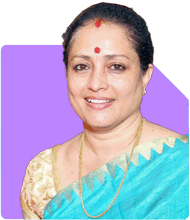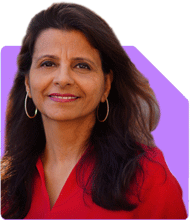Diabetic at 60: Eating and Exercise Advice Needed
Dr Karthiyayini Mahadevan | Answer |Ask -Follow
General Physician - Answered on Oct 08, 2024
She specialises in general medicine, child development and senior citizen care.
A graduate from Madurai Medical College, she has DNB training in paediatrics and a postgraduate degree in developmental neurology.
She has trained in Tai chi, eurythmy, Bothmer gymnastics, spacial dynamics and yoga.
She works with children with development difficulties at Sparrc Institute and is the head of wellness for senior citizens at Columbia Pacific Communities.... more

I am 60 years old . My weight is 71 kg. I am diabetic from last 27 years old. I used to medicine as well as insulin. Ajaduo 10/5 mg and Ryjodec insulin 22 unit before day meal n at night linvas tab n insulin 16 unit . Today my fasting sugar was 74 . Also measure hba1c n found 6.2 %. Average blood sugar found to be 131. Pl advice what types of food i should follow. Also exercise. I used to do yoga n morning walk regularly. Thanks.
1.as you wakeup beforebreakfast
2.an hour after breakfast
3. Two hrs after lunch
4.before dinner and
5.an hour after dinner
Consult a Nutritionist for a detailed menu for your consituition
Overall have early dinner
Avoid heavy animal protein for dinner meal
Regular physical exercise like brisk walking 30 mts a day five days a week
You may like to see similar questions and answers below
Komal Jethmalani | Answer |Ask -Follow
Dietician, Diabetes Expert - Answered on Mar 08, 2023
Komal Jethmalani | Answer |Ask -Follow
Dietician, Diabetes Expert - Answered on Mar 26, 2024
Komal Jethmalani | Answer |Ask -Follow
Dietician, Diabetes Expert - Answered on Mar 26, 2024
Dr Karthiyayini Mahadevan | Answer |Ask -Follow
General Physician - Answered on Jun 26, 2024
Kanchan Rai |646 Answers |Ask -Follow
Relationships Expert, Mind Coach - Answered on Dec 12, 2025
Ravi Mittal |677 Answers |Ask -Follow
Dating, Relationships Expert - Answered on Dec 12, 2025
Ramalingam Kalirajan |10881 Answers |Ask -Follow
Mutual Funds, Financial Planning Expert - Answered on Dec 12, 2025
Ramalingam Kalirajan |10881 Answers |Ask -Follow
Mutual Funds, Financial Planning Expert - Answered on Dec 12, 2025
Reetika Sharma |423 Answers |Ask -Follow
Financial Planner, MF and Insurance Expert - Answered on Dec 12, 2025
Reetika Sharma |423 Answers |Ask -Follow
Financial Planner, MF and Insurance Expert - Answered on Dec 12, 2025
Reetika Sharma |423 Answers |Ask -Follow
Financial Planner, MF and Insurance Expert - Answered on Dec 12, 2025
Reetika Sharma |423 Answers |Ask -Follow
Financial Planner, MF and Insurance Expert - Answered on Dec 12, 2025
Reetika Sharma |423 Answers |Ask -Follow
Financial Planner, MF and Insurance Expert - Answered on Dec 12, 2025
Mayank Chandel |2572 Answers |Ask -Follow
IIT-JEE, NEET-UG, SAT, CLAT, CA, CS Exam Expert - Answered on Dec 11, 2025


























